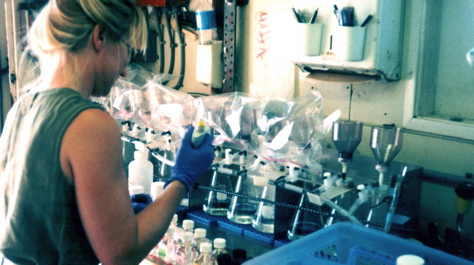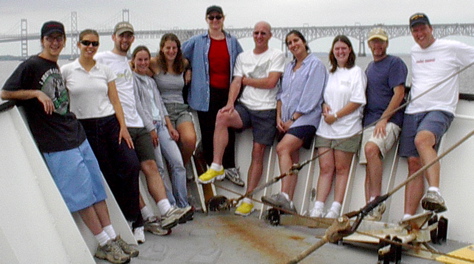Bronk to help set national priorities for carbon research
Professor Deborah Bronk of the Virginia Institute of Marine Science has been chosen to serve on the working group charged with deciding the nation’s strategy for carbon-cycle research in the coming decade.
Research to understand the in and outs of the global carbon cycle is a key part of the nation’s ability to predict, monitor, and respond to climate change and global warming.
Bronk will serve a 2-year term on the Carbon Cycle Science Working Group, part of the U.S. Climate Change Science Program (CCSP). The CCSP coordinates climate change research among 13 federal agencies, including the Departments of Agriculture, Commerce, Defense, Energy, and Interior; NASA; and the National Science Foundation.
Dr. Christopher Sabine, working group co-chair, says Bronk was selected because of her expertise in food-web dynamics in marine systems. “Deb’s work on nitrogen cycling between phytoplankton, zooplankton, and bacteria is directly relevant to understanding carbon cycling and compliments the expertise of the other working group members,” says Sabine.
The working group will develop the plan that agency managers use to guide funding priorities and research directions for carbon-cycle science in the U.S. between 2010 and 2020. The group will build on an earlier plan published in 1999.
Bronk says a new plan is needed because “There’s no comparison between what we know now and what we knew 10 years ago. The field has just exploded, and our new knowledge has raised many new issues and questions.”
One newly recognized issue that gives Bronk considerable pause is ocean acidification—the process by which rising carbon dioxide levels increase the acidity of seawater, thus making it more difficult for corals, mollusks, and some microorganisms to secrete the calcium carbonate that forms their skeleton or shell.
Recent studies show that calcification rates can drop by as much as 45% at atmospheric carbon dioxide levels of 700 to 800 parts per million (ppm). That’s the level that will be reached by the end of the century if consumption of fossil fuels continues at projected levels. The current atmospheric level of carbon dioxide is 385 ppm.
The working group is expected to identify the “building blocks” it will use to revise the nation’s carbon-research plan by December 2008. The group expects to complete the revised plan by December 2009.



